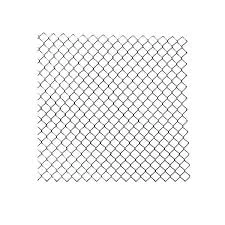Understanding Gabion Stone per Cubic Meter A Comprehensive Overview
Gabions are structures made from wire mesh containers filled with various materials, predominantly stones. They are used in civil engineering, landscaping, and environmental protection due to their versatile nature and durability. When considering the use of gabions, an essential factor is the amount of stones required, typically measured in cubic meters (m³). This article will delve into the concept of gabion stone per m³, providing insights into its importance, calculations, and applications.
Understanding Gabion Stone per Cubic Meter A Comprehensive Overview
Calculating the volume of stones needed for a gabion involves understanding both the size of the gabion and the type of stones being used. Gabions can come in various sizes, including dimensions like 2m x 1m x 1m or smaller configurations. To calculate the volume of stone required, you multiply the length, width, and height of the gabion. For instance, a standard gabion measuring 1m x 1m x 1m will require one cubic meter of stones.
gabion stone per m3

Now, let’s talk about the stone types typically used in gabion construction. The stones should ideally be quarried rock, granite, or limestone, chosen for their weight, durability, and ability to withstand environmental stressors. The size of the stones also matters; larger stones are often used for retaining walls, while smaller ones might be preferred for erosion control. The weight of the stones can affect the overall stability of the gabion structures. Thus, understanding the average weight of the stone per cubic meter becomes essential for ensuring structural integrity.
The average density of gabion stones can vary significantly based on the type of rock used. For example, granite has a density of approximately 2.63 grams per cubic centimeter (g/cm³), translating to about 2,630 kilograms per cubic meter (kg/m³). In contrast, limestone has a somewhat lower density, which might range from 2.2 to 2.5 g/cm³, or 2,200 to 2,500 kg/m³. Thus, when considering the selection of stones, not only the volume but also the specific density will influence the total weight and placement logistics of the gabion.
Furthermore, understanding the cost implications of gabion stones per m³ can significantly affect project budgeting. The price of gabion stones can vary based on factors like location, type of rock, and market demand. Therefore, it's crucial to calculate not only the volume needed but also the estimated cost to ensure the project remains within budget.
In conclusion, understanding gabion stone per cubic meter is vital for anyone involved in gabion construction, whether for personal landscaping projects or larger civil engineering endeavors. The process involves calculating the required stone volume, selecting the appropriate type of stone, and being aware of the implications on weight and cost. With this knowledge, you can make informed decisions when planning your gabion projects, ensuring they are not only aesthetically pleasing but also structurally sound and cost-effective.
















